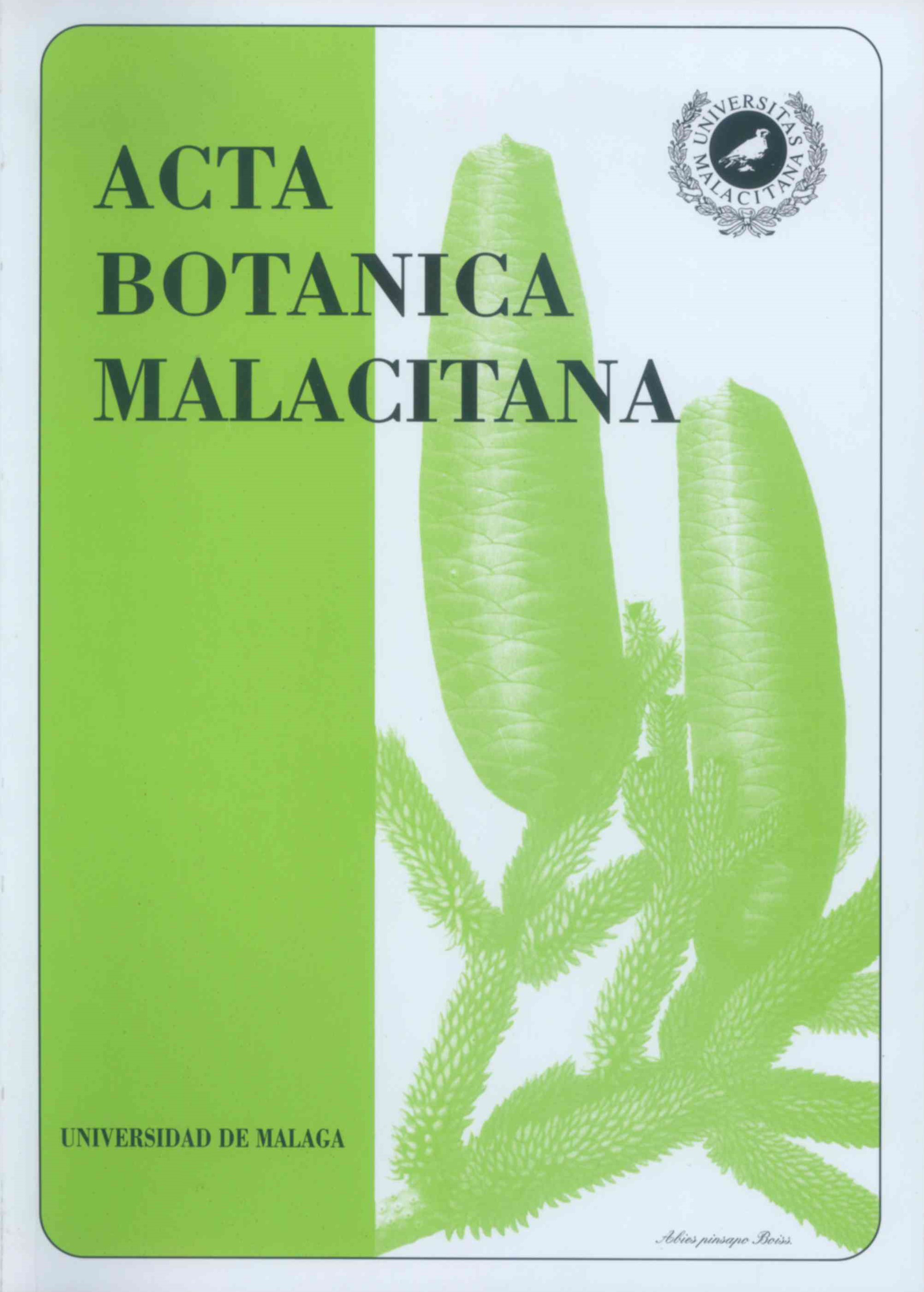Temperature influence on the flowering of Quercus in the South of Galicia (Ourense and Vigo, 1994-98)
DOI:
https://doi.org/10.24310/abm.v25i0.8480Keywords:
Chilling, growth degree days, Ourense, polinization, Quercus, VigoAbstract
Plant requirements in order to survive periods of adverse climatic conditions are satisfied by means of physiological adaptions. Thus, woody plants in temperate regions, in order to prevent the water in their cells from freezing, slow their growth down almost to a standstill, entering into a physiological state called "dormancy". Many authors indicate that the end of the dormancy phase require a period of low temperatures followed by another of relatively warm temperatures. When the cold and the heat accumulations are fullfilled, pollination occurs. The objective of this study is to ascertain the influence that a climatic parameter such as temperature exerts on Quercus in the south of Galicia, in order to identify the start of the dormancy period, its duration and the consequents cold and heat requirements that triggers flowering. In this regard, we chose two arcas, since they have different temperature patterns, ranging from mild in the case of Vigo to cold in that of Ourense. Monitoring in the two stations was carried out by means of a 7-day LANZONI VPPS 2000 pollen trap, based on the Hirst pollen trap. Quercus began its pollination period in the month of March. In Vigo flowering took place during the first fifteen days and a few days later in Ourense. During the four years under study, in order to overcome the dormancy period, Ourcnse needed an average of 778 chilling hours (CH) and Vigo had a minor chilling accumulation with only 458 CH. In the case of heat accumulation, we found that Ourense had the smallest requirement and Vigo the largest, thus Ourense needed an average of 352 GDD (Growth Degree Days) and Vigo around 450 GDD.
Downloads
Metrics
References
AIRA, MJ., A. DOPAZO M.V. JATO y F.J. RODRÍGUEZ -1998- Aerobiología de Galicia: Estación de Santiago de Compostela (1997). Rea 4: 107-110.
ANDERSEN, T.B. -1991- A model to predict the beginning of the pollen season. Grana 30: 269- 275.
ARON, R. -1983- Availability of chilling temperatures in California. Agric. Meteor. 28: 351-363.
FAUST, M. -1989- Physiology of temperate zone fruit trees. In Jhon Wiley &Sons, New York, pp. 188-189.
FELKER, F.C., H. A. ROBITA1LLE & F. D. HESS -1983- Morphological and ultrastructural development and starch accumulation during chilling of sour cherry flower buds. Amererican Journal of Botany 70(3): 376-386.
FERRANTI, F., R. ANDREUTTI, E. TEDESCHINI & G. FRENGUELLI -1996- Microsporogenesis and dormancy period in some arboreal species. Giorn. Bot. Ital. 130: 319
FRENGUELLI, G., F. TH. M. SPIEKSMA, E. BRICCHI, B. ROMANO, G. MINCIGRUCCI, A.H. NIKKELS, W. DANKAART & F. FERRANTI -1991- The influence of air temperature on the starting dates of the pollen season of Alnus and Populus. Grana 30: 196- 200.
FRENGUELLI, G. -1997- Pollen volume change as a marker of the dormancy period in some arboreal plants. Allionia 35: 181-187
FRENGUELLI, G., F. FERRANTI, E. TEDESCHINI & R. ANDREUTTI -1997- Volume changes in pollen grain of Corylus avellana L. (Corylaceae) during development. Grana 36: 289-292.
FRENGUELLI, G. & E. BRICCHI -1998- The use of the pheno-climatic model for forecasting the pollination of some arboreal taxa. Aerobiologia 14: 39-44.
GALÁN, C., J. EMBERLIN, E. DOMÍNGUEZ, R. BRYANT & F. VILLAMANDOS -1995- A COMPARATIVE ANALISIS OF DAILY VARIATIONS IN THE GRAM1NAE POLLEN COUNTS AT CORDOBA, SPAIN AND LONDON, UK. GRANA 34: 189-198.
HIRST, J. -1952- An automatic volumetric sporetrap. Ann. Appl. Biol. 36: 257-265.
KRAMER, P.J. & T.T. KOZLOWSK I -1979- Phisiology of woody plants. Academic Press New York, 546-627.
LINVILL, D. -1990- Calculating chilling hours and chilling units from daily maximum and minimum temperature observations. Hortscience 25 ( 1 ): 14-16.
PIRES, J., N.A., VILLA & H. SILVEIRA -1997- A model including photoperiod in degree days for stimating Hevea bud growth. Int. J. Biometeorol 41:1-4.
RICHARDSON, E.A., D.S. SCHUYLER & D.W WALKER -1974- A model to for estimating the completion of rest of "Redhaven" and "Elberta" peach trees. Hortoscience 9(4): 331-332.
SPIEKSMA, F. TH. M., G. FRENGUELLI, A.H. NIKKELS, G. MINCIGRUCCI, L.O.M.J. SMITHUIS, E., BRICCHI, W. DANKAART & B. ROMANO -1989- Comparative study of airborne pollen concentrations in central Italy and The Netherlands (1982-1985). Grana 28: 25-36.
SPIEKSMA, F. TH. M., J. EMBERLIN, M. HJELMROOS, S. JAGER & R.M. LEUSCHNER -1995- Atmospheric birch (Betula) pollen in Europe: trends and fluctuations in annual quantities and the starting dates of the seasons. Grana 34 (1): 51-57.
WAREING, P.F. & I.D.J. PHILLIPS -1978- The control of growth and differentiation in plants. Pergamon press, Oxford, 253-280.
Downloads
Published
How to Cite
Issue
Section
License
All information related to the licensing of published works in Acta Botanica Malacitana and copyright can be found in our Editorial Policy.







1.png)
